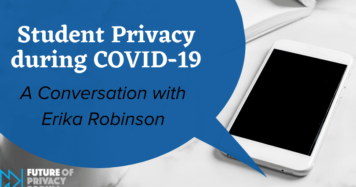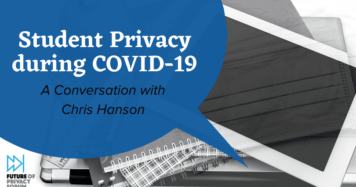The digital age has introduced powerful tools to harass K-12 teachers online. While there are many forms of harassment, this blog will focus on the doxing (or doxxing) of teachers and the creation of false accounts on social media to impersonate teachers. The blog will also include links to mental health resources for those teachers feeling cognitively overwhelmed.
Teachers operate in a precarious position: they are on the front lines shaping the future of our society. Teachers obtain degrees and attend regular training to stay up to date with the latest educational theories and methods. Their coursework is guided by a balance between social interest and evolving education standards. Due to the importance of their role, teachers are often subject to scrutiny. From policies that allow parents to police what books are allowed in libraries to teachers being labeled as “groomers” for their reproductive health lesson plans, the parent and public’s control over classroom content looms over the post-pandemic era of teaching. In 2022, teachers are underpaid, overworked, and fatigued from the pandemic. Now, teachers are the subject of harassment from groups like ‘Moms for Liberty’ and social media accounts like ‘Libs of TikTok.’
This interference and disagreement with the educational process present issues when the safety of teachers is put at risk, specifically teachers’ physical safety and the sanctity of their mental state. Some states have laws aimed at addressing bullying, but bullying and harassment can take different forms. The forms of harassment in this blog each contain a privacy violation, typically in the form of weaponizing personally identifiable information (PII) without the teacher’s consent in manners intended to cause physical or mental distress. When incidents of harassment toward teachers occur, there is often no clear legal path, no school district policies, and no guidance for navigating the harm caused. Harassment may be a clear violation of website terms or school policies, and students may lose privileges as a result of their actions, but it is not difficult for fake accounts and retaliation to reemerge.
Teachers enter the profession with a desire to contribute positively to the community. Their motivation comes from raising children and instilling the value of knowledge and proper development. Often, this education incorporates some deference into what a teacher thinks is best. This can occur for controversial issues, such as sexual and reproductive health education, LGBTQIA rights, critical race theory, and anti-racism policies. Further, when pressure from parents contradicts their professional judgment, it causes cognitive dissonance and stress for teachers in an already high-stress role. In some instances, the pressure becomes harassment.
Harassment Through Doxing
Savvy online actors have posted both private and publicly available information of teachers engaged in such controversial issues. These actors can range from students, parents, or faculty, to other individuals outside the school. Doxing is the publishing of sensitive personal information online—including home address, email, phone number, social security number, photos, etc.—to harass, intimidate, extort, stalk, or steal the identity of a target, as defined by the Online Harassment Field Manual.
Some of this information is publicly available and held by the government, and it is accessible through Freedom of Information Act (FOIA) requests because teachers are government employees. The issue of doxing educators prompted Colorado to pass Senate Bill 22-171 this year, which adds educators into a protected class of government employees who may withhold information from the internet if the public access to that information “poses an imminent and serious threat” to the educator or their immediate family.
The bill was brought about following a protest in Colorado supporting former Douglas County School District Superintendent Cory Wise in which students and teachers walked out to voice disagreement with his firing. After the protest, those 1,500 teachers involved found fliers on their cars informing them to “get out and leave” after records were requested for the names of all the teachers who were absent from school the day of the protest. This is an example of weaponizing publicly available PII to target, harass, and intimidate teachers and violate their privacy.
One form of doxing involves students recording teachers without their permission. This issue is occasionally addressed in school acceptable use policies, but some states have not addressed recording teachers or have passed laws deeming it legal. Doxing more commonly involves disclosing private information in public forums. An incident surrounding a school in Connecticut involved death threats to Hartford Superintendent Leslie Torres-Rodriguez. The harassment went as far as to post her previous home address numerous times. The combination of death threats and the disclosure of one’s residence creates a feeling that one is never safe—a cruel punishment for the crime of creating places of comfort, safety, and learning for young students.
The solutions to protect oneself from doxing are complex. There are principles to minimize one’s footprint online, and there are security measures one can take to prevent hacking. Several resources including Google’s Personal Information Removal Service, the Digital Trust & Safety Partnership, the EFF’s Surveillance Self-Defense Project, and the Online Harassment Field Manual contain guides to protect oneself online. The latter guide contains a comprehensive field manual on reducing the amount of information currently available about oneself and steps to take if the doxing has already occurred. These steps include reporting the doxing incident to the platform, assessing the level of risk to your safety, and contacting local law enforcement in the event of a high level of danger.
Harassment Through Impersonation
The relative anonymity of the internet also allows bad actors to harass teachers through impersonation—creating fake social media accounts and posting content that would put a negative light on the teacher. These fake social media accounts may impersonate a school, post gossip targeting teachers, or impersonate a teacher. As illustrated by this student-made YouTube video, this situation may arise innocuously from students with free time on their hands. However, the impersonation accounts may take on a more sinister tone when sexually explicit or other defamatory content is included in the account, such as in this situation in Connecticut. These common situations violate the privacy tort of false light, a civil offense, and are criminal offenses in many states. What seems to students to be a harmless prank can put a teacher’s job and social standing in jeopardy.
There are several routes to redress situations of social media impersonation: through the school, through the social media service itself, and through law enforcement. After documenting and reporting the account to the school, it remains in the hands of school administrators on what the best course of discipline would be. Discipline through the school is often difficult because the bad actor behind the social media account is rarely known or easily identifiable. Students may hide their tracks by using a VPN, software such as Tor that allows anonymous browsing, or other means. Schools must conduct an investigation to identify the account creator and may require police involvement to do so successfully, especially if the school needs access to home internet provider logs. The next most pertinent route is to contact the social media service and file a form through their help center: Instagram, Facebook, TikTok, and Twitter all have this service.
The third option is to contact law enforcement. If the bad actor is a student, the prospect of subjecting that student to the legal system is intimidating. However, there are several cases that may provide insight as to what claims a teacher may have and what paths for recourse they could pursue. Two cases in the Third Circuit came to different conclusions in the same year because of the difference in facts. In these similar cases, which addressed the disciplinary actions in response to fake Myspace profiles created to harass teachers, one resulted in a disciplinary response that was deemed to be a violation of the student’s First Amendment rights, and another found the opposite result. Court cases may provide a guide on the legal route to appropriate disciplinary action against students while avoiding First Amendment and Due Process violations. Teachers may find it helpful to discuss these cases with legal counsel or their school district when learning about their options toward a solution. For more information on students’ First Amendment rights, a school’s legal rights, or social media platforms’ liability, check out the following cases: Mahanoy Area School District, Kutchinski, Caraccioli v. Facebook, Inc, and Dehen v. Doe.
Practical Tips for Teachers
Several best practice guides for responding to impersonation accounts are present online. These include InternetMatters.org and the hacking blog Jessysaurusrex. Some guides suggest documenting the information involved. Teachers should exercise additional caution if the harassment deals with explicit details of minors that should not be documented. This documentation could be risky for both the minors involved and the teacher documenting, as was an issue in Loudon County, Virgina.
Addressing incidents of harassment may involve informing the school, the social media platform, or contacting law enforcement. There are also steps for teachers to take before such incidents occur. Teachers should consider evaluating their privacy settings on all social media sites and choosing those that are the most privacy protective. Teachers can also set Google alerts for their name to receive an email whenever they are mentioned on the web.
The unfortunate reality is that there will always be tech-savvy, malicious people with too much time on their hands. Some of these people may be students who don’t fully understand the scope of their harm, while others may be angry adults who intend the exact harm that many teachers encounter. If you are a teacher experiencing online harassment and your mental health is suffering, please look at the resources provided by Teach.com for help. If you are in a moment of crisis, please contact the Suicide Prevention Lifeline at 1-800-273-TALK (8255), or dial 911 in case of an emergency.
Download our online safety tips for education professionals.




